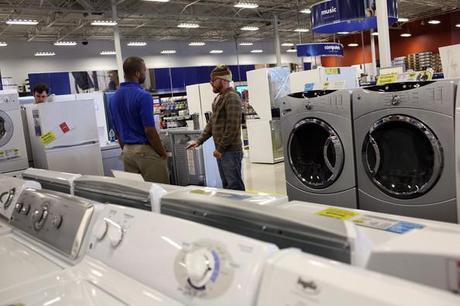 Fundamental analysts try to determine the value of
financial instruments within a market. The goal is to anticipate movements
based on external events and influences, rather than look at price patterns.
Fundamental analysts try to determine the value of
financial instruments within a market. The goal is to anticipate movements
based on external events and influences, rather than look at price patterns.To find the true value of a share, for example, fundamental analysts look at the upcoming factors that are likely to affect that share’s price. These could include the relationship between financial statements, revenue forecasts, quality of management, earnings and growth. They then make a judgment on the asset, perhaps compared to its sector or market peers, about whether it is over- or under- valued at the present time.
Fundamental analysis also includes economic analysis. Economists are reliant on the economic updates produced by countries and these are called economic indicators. Some of these indicators will be familiar to you, such as unemployment figures, GDP and inflation. Others will be less so, such as Purchasing Managers Indexes and industrial production figures, but that does not mean that they are less important.
Indeed, certain leading indicators give notice as to how a certain economy is going to do in the future as opposed to how it is doing at the present time.
For instance one of the key US economic indicators is the durable goods orders from the Commerce Department. But what are durable goods orders?
First of all, we need to look at what are defined as being ‘durable goods’. Durable goods are items that are expected to last three years or more. These tend to be big ticket items, such as furniture, cars, heavy machinery, etc. In other words, not the kind of things those are bought with regularity, but tend to be occasional purchases. This in turn means that the data in the durable goods report can be subject to volatility and difficult to predict.
The report is split into four sections: shipments, new orders, unfilled orders and inventories. Shipments are items that have actually been sold and sent to distributors from the manufacturers during the month in question.
New orders are items that have been ordered during the month in question. This section of the report, therefore, looks to the future and can be useful for gaining an insight into how businesses are feeling about future spending. A spike in durable goods new orders is often associated with forthcoming economic growth, whereas a fall is associated with a slowdown or economic softness. Unfilled orders are items that have not been shipped. Inventories totals the value of items held at factories and distribution branches.
Durable goods data can whipsaw from month to month because of the high value of the goods in question and the irregularity with which such items are purchased, and the most volatile sectors are defence and transportation – the demand for cruise missiles, armoured tanks, warships or jetliners is massively unpredictable and there may be no continuity from month to month.
It is usually more useful, therefore, to strip out defence and transportation. This will show that, broadly speaking, what manufacturers are investing in new equipment and have some confidence about growth. The latest durable goods figures from the US were released just before Christmas last year and revealed an increase in new orders for durable goods in November of $1.6 billion or 0.7%.
Shipments of manufactured goods increased dramatically by 1.5% to $227.1 billion in November following a 0.1% rise in October. Unfilled orders climbed 0.1% on the month to $984.4 billion while inventories gained 0.2% or $0.7 billion. The figures were better than analysts had been expecting and were ‘encouraging’ according to Brian Jones a senior economist at Société Générale in New York.
An increase in US durable goods orders, despite their traditional volatility, can be an early warning that the world’s largest economy is entering a positive period of economic health. Any increase in major purchases, such as cars, is likely a sign of an increase in household and consumer spending confidence and as such can lead to an increase in the value of the US dollar or the price of shares in car companies such as General Motors.
About The Author: Nick Dockerty is a financial writer for IG, a leading CFDs provider. The above comments do not constitute investment advice and IG accepts no responsibility for any use that may be made of them. IG provides access to a huge amount of financial markets including forex, commodities, shares and indices.

